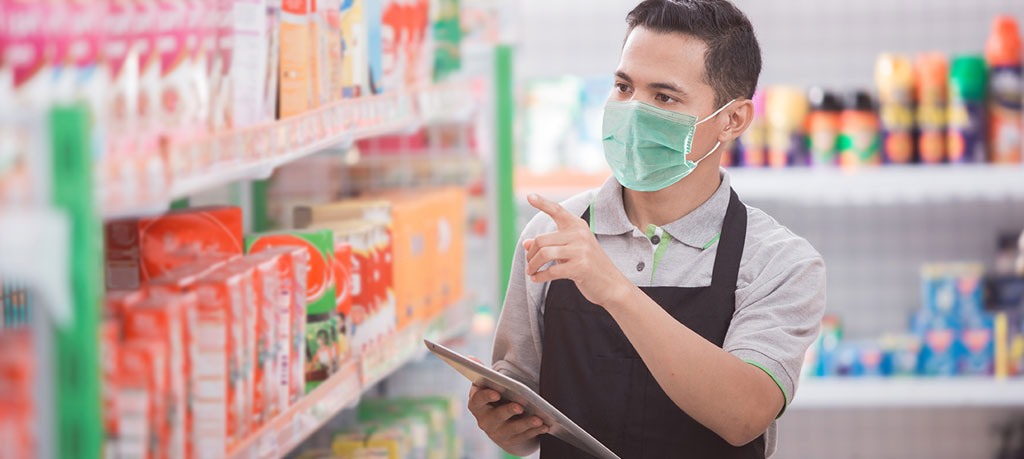By Jared Rabin, Senior Global Enterprise Account Executive at One Door
Grocers have adapted with lightning speed to the new challenges of the pandemic.
Supply chain upheaval, new fulfillment models, social distancing requirements, and compliance issues are just a few of the obstacles that have emerged since March 2020.
Out of the public eye, visual merchandising and space planning processes were significantly disrupted across the spectrum, from assortment planning to in-store execution.
Compliance suffered as team members scrambled to get products on the shelves in any capacity, without necessarily following the prescribed plan.
And this isn’t going to change any time soon. New customer behaviors that began during the pandemic will permanently change how grocery stores operate.
Retailers and brands that survive and thrive will need the right technology to communicate merchandising plans quickly and accurately to keep shelves stocked according to store plans and not sacrifice extra labor hours.
More importantly, information must continue to flow between stores and headquarters to provide grocery leaders the visibility they need on progress.
Read about four trends impacting grocers that might continue beyond the pandemic:
Category managers will pivot from typical merchandising calendars to short-term planning of SKU assortments.
When the United States went into lockdown and businesses shuttered, grocery stores stayed open.
Panic shopping set in, and the hoarding mindset took over. Shortages of toilet paper, disinfectant, and other household staples led to empty shelves and a scramble in the supply chain. Stores needed to adapt fast.
For visual merchandisers and space planners, the weekly calendar that was planned a year ago was abandoned as short-term assortment needs became the focus.
As the cadence of planograms changed, the ability to make quick decisions and communicate updated merchandising plans to each store tailored to their footprint became more critical than ever.
Retailers will likely continue to operate this way because of the fluidity of the pandemic and the changes local and federal governments make weekly.
Floor plans, signage, and space allocation were upended. Communicating changes to stores will be critical.
Plexiglass barriers at the checkout.
One-way aisles.
“Face masks required” signage.
Coolers in front of stores for curbside pickup.
Directional arrows on floors for queue management.
Grocery stores made rapid changes in how space was allocated and managed because of social distancing requirements.
More than ever, stores will need a clear communication channel for all these important – often government-mandated – points of communication that revolve around floorplans.
Sending instructions to your stores through static PDF documents, SharePoint portals, and email leaves room for human error by store associates who have to install new fixtures and signage.
Overburdening store teams with information irrelevant to their floor plan also leads to mistakes in setting up – and eventually taking down – temporary installations.
Now is a critical time to break down all barriers that face store teams in connecting the dots of their merchandising plans.
Retailers should look to eliminate the silos of flat files on SharePoint and Excel and digitally connect floorplan and planogram details through a single user experience.
Online orders, curbside pickup, and third-party shopping services are here to stay.
Online grocery shopping skyrocketed as a result of COVID-19. Customers wishing to avoid stores turned to other options, like BOPIS (Buy Online/Pickup in Store), and third-party home delivery services, such as Instacart and Shipt, have surged in popularity.
Curbside pickup is the latest omnichannel fulfillment service to gain steam in the grocery sector, and it will remain an integral part of grocery retail into the future.
These new shopping and fulfillment options can further complicate merchandising processes.
Retailers will need a central platform that houses all relevant information so that planograms are accurate for an off-the-shelf shopping experience and back-room fulfillment.
That’s why it’s vital to upend the historical model of relying on black-and-white schematic planograms with product lists underneath them.
It’s time to transform them into interactive planograms to ensure products are in their planned positions for both pickers and customers.
The flurry to get shelves stocked could hurt in-store execution and compliance.
The amped-up energy to get products on the shelf as expeditiously as possible hurt not only the quality of execution but also in-store compliance during the initial chaos of the pandemic.
Even in “normal” times, grocery stores must be able to validate that products are merchandised, promotions are set, and fixtures are installed correctly.
During the lockdown, when vendors and third-party audit firms couldn’t enter stores to check compliance, that job fell to store teams.
HQ and field leaders need visibility into the progress of merchandising work as it takes place without a third-party audit. A robust compliance platform with surveys, photos, and associate engagement is a critical tool in the execution feedback loop.
Having compliance in real-time gives employees access to help as problems arise.
Ultimately, it ensures that all execution information gets back to HQ, where it can be analyzed, measured, and leveraged in the planning process to maximize store performance.
Rethink Your Merchandising Processes
Now is the time for retailers to ensure that their merchandising process keeps up with the transformation rate in their grocery stores.
(If needs-based retailers don’t keep up with visual merchandising standards, they’re looking at a $30 billion loss in revenue, according to One Door’s latest report.)
If large retailers don’t adapt, they will suffer from lost sales opportunities and increased labor costs.
One Door is focused on communicating merchandising plans to stores through real-time interactive merchandising instructions.
Our platform gives grocery retailers the tools to pivot quickly, execute accurately, and communicate with confidence.
With a cloud-based platform that knows the exact floor plan of every store, store teams can get the right product on the right shelf every time.
Want to learn more? Schedule a demo today.
